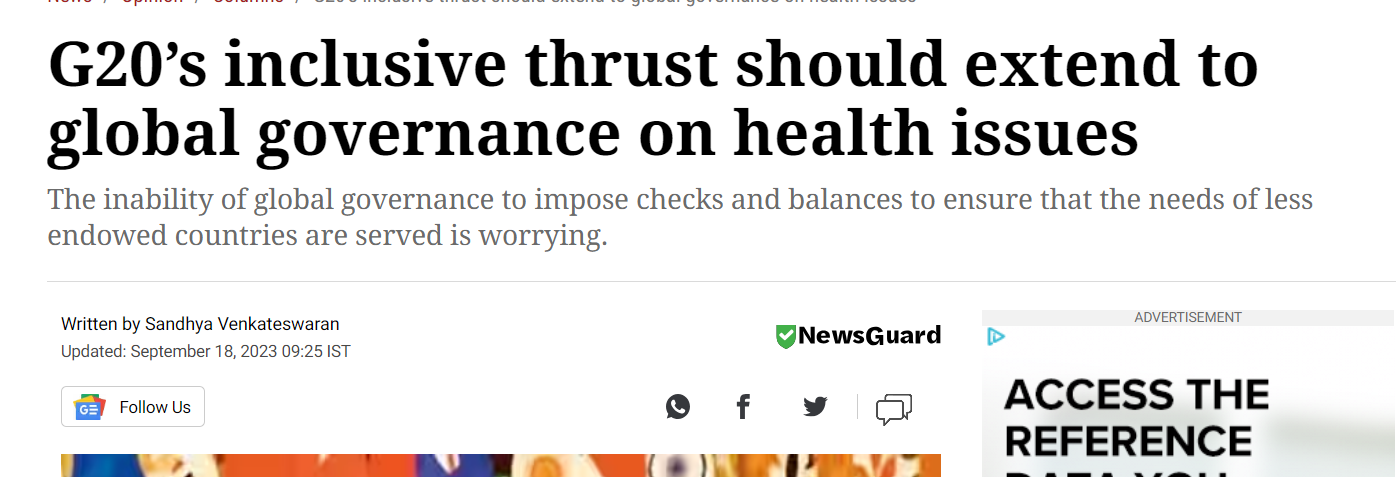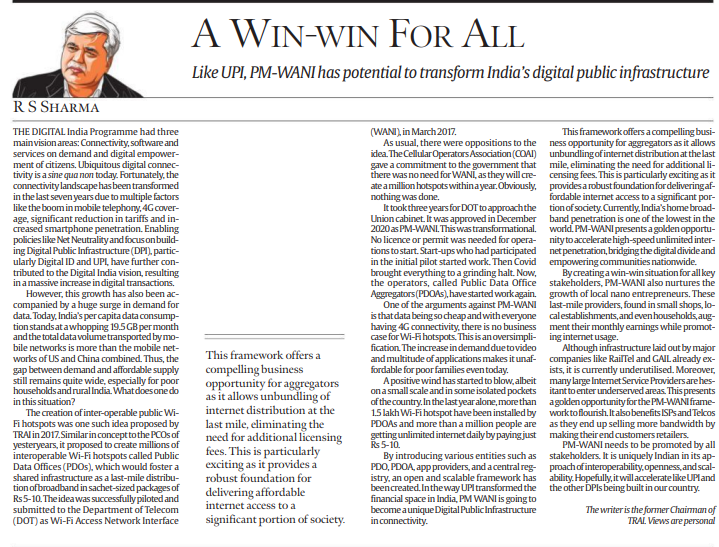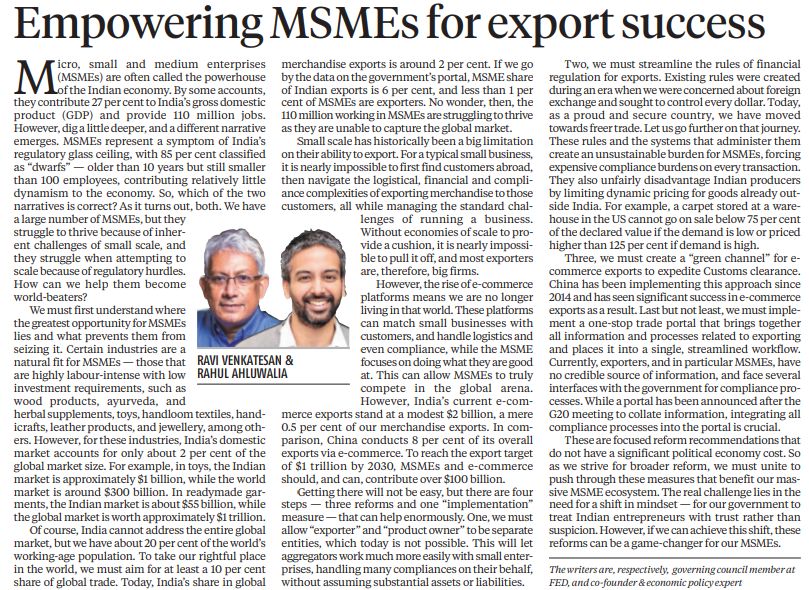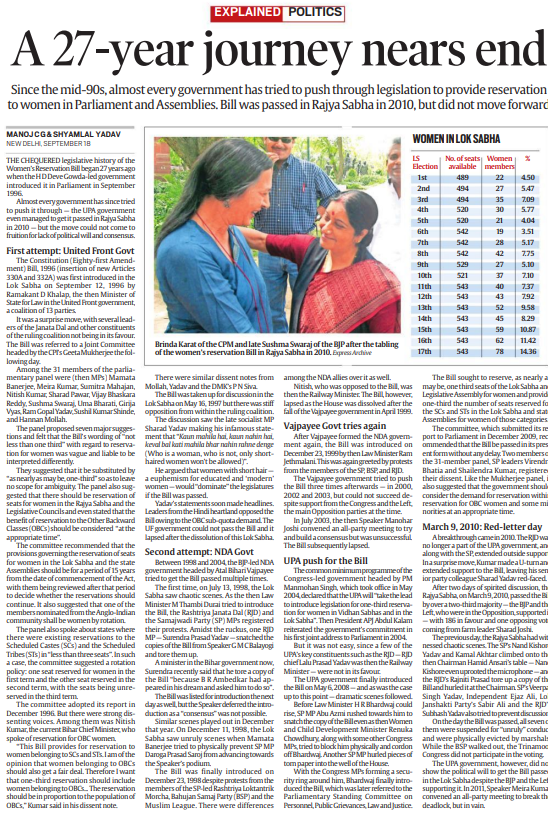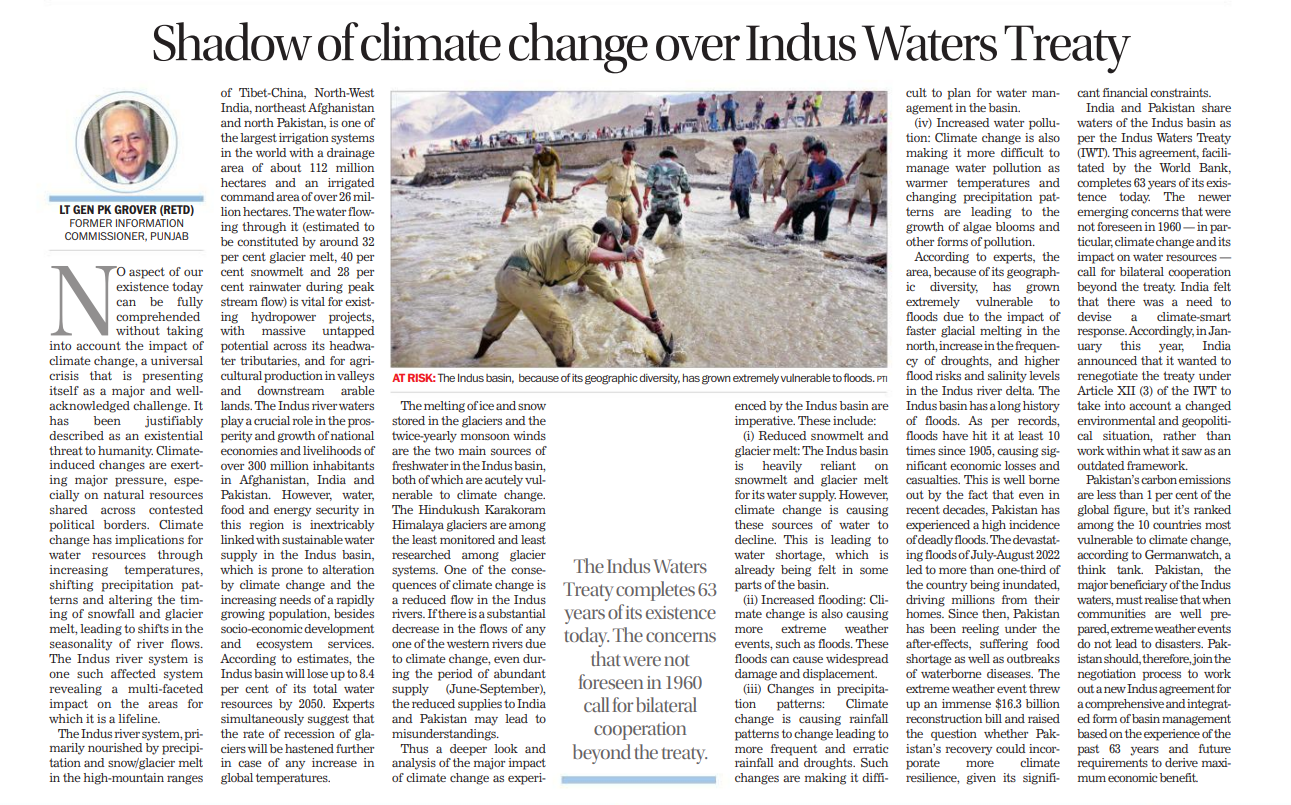PRIORITIZING GLOBAL SOUTH IN GLOBAL HEALTH GOVERNANCE
Introduction
- lndia’s successful presidency in the G20 offers an opportunity to examine how the Global South is prioritized at the intersection of development issues and foreign policy.
- This analysis focuses on the crucial domain of global health, exploring whether equity concerns are adequately addressed when foreign policy and health intersect.
Global Health as a Political Priority
- The importance of global health in foreign policy has grown significantly, underscored by the Covid-19 pandemic.
- Health now impacts national security, economics, and international cooperation.
- This raises questions about whether health is used as a tool to protect national interests or if foreign policy can be driven by global altruism.
Global Commitments and Equity
- Numerous global commitments and frameworks exist, but their adherence depends on how national interests align with global concerns.
- Ideal global health governance should ensure universal and equitable access to health infrastructure, medical supplies, and financing.
- It must also balance research and development (R&D) priorities, geographical representation in R&D and manufacturing, and the dissemination of research output to Southern countries.
Global Leadership and Governance Challenges
- The Covid-19 pandemic exposed shortcomings in global leadership and governance.
- National interests took precedence over collective action, with wealthier nations securing vaccine supplies in advance.
- Initiatives like ACT-A and COVAX struggled to mobilize commitment and funds, delaying equitable vaccine distribution.
Governance Gaps and Dominance
- Governance gaps arise due to the absence of a unified decision-making authority and unclear roles of governments and organizations.
- The dominance of certain countries in global governance institutions often overlooks the interests of a significant portion of the world.
Geopolitics and Domestic Politics
- Geopolitical and domestic political considerations often lead foreign policy to prioritize global health only as far as national interests are served. Global governance’s inability to ensure equitable outcomes for less endowed countries remains a concern.
Rethinking Global Governance
- Past global governance mechanisms have been criticized for favoring the Global North and succumbing to geopolitical pressures.
- The roles of organizations like WHO, G20, and other global platforms need clarification in the evolving world order with diverse actors.
Balancing National Interests with Global Equity
- Future conventions should address the gaps in existing frameworks regarding the balance between national interests and global equity aspirations.
- Implementation and responsiveness to all states are crucial, requiring countries to recognize the value of global equity in their foreign policy goals.
- Strong and unaligned global governance is necessary to ensure that commitments made in global gatherings serve both domestic needs and global equity.
Conclusion
India’s G20 presidency has shed light on the importance of addressing equity in global health governance. To prioritize the Global South and achieve equitable outcomes, a thorough reevaluation of global governance mechanisms and a commitment to balancing national interests with global equity aspirations are essential.
PM-WANI: Bridging the Digital Divide in India
Introduction
- The Digital India Programme encompasses three central vision areas: Connectivity, software and services on demand, and the digital empowerment of citizens.
- Here we will discusses the progress of the Digital India vision, with a focus on connectivity, and the recent introduction of the PM-WANI (Public Wi-Fi Access Network Interface) initiative aimed at addressing the digital divide in India.
Connectivity Transformation
- Over the past seven years, India’s connectivity landscape has undergone significant transformation.
- Factors such as the proliferation of mobile telephony, widespread 4G coverage, reduced tariffs, and increased smartphone adoption have played pivotal roles in bridging the digital gap.
- Policies like Net Neutrality and the development of Digital Public Infrastructure (DPI), including Digital ID and UPI, have further contributed to the growth of digital transactions.
- However, the surge in demand for data has created a gap between demand and affordable supply, especially in rural areas and among lower-income households.
The Concept of Public Wi-Fi Hotspots (PM-WANI)
- In 2017, the Telecom Regulatory Authority of India (TRAI) proposed the creation of interoperable public Wi-Fi hotspots known as Public Data Offices (PDOs).
- These PDOs were envisioned as a shared infrastructure to provide last-mile broadband access in small, affordable packages.
- The concept was successfully piloted and submitted to the Department of Telecom (DOT) as Wi-Fi Access Network Interface (WANI) in March 2017.
Challenges and Opposition
- Despite the potential benefits of WANI, opposition from the Cellular Operators Association of India (COAI) delayed its implementation.
- COAI promised to establish a million hotspots within a year, but no progress was made.
- It took three years for the DOT to approach the Union cabinet, and PM-WANI was finally approved in December 2020.
- The COVID-19 pandemic temporarily halted its implementation, but Public Data Office Aggregators (PDOAs) have resumed work.
Addressing the Affordable Internet Gap
- One argument against PM-WANI is the perception that data is already cheap and widely available through 4G connectivity.
- However, the growing demand for data due to video streaming and various applications still makes it unaffordable for many families.
- PM-WANI has started to address this issue, with over 1.5 lakh Wi-Fi hotspots installed in the past year, providing affordable internet access to over a million people for just Rs 5-10.
Creating an Open and Scalable Framework
- PM-WANI has introduced a framework involving PDOs, PDOAs, app providers, and a central registry, promoting interoperability and scalability.
- This initiative, like UPI in the financial sector, has the potential to become a unique Digital Public Infrastructure for connectivity.
Business Opportunities and Local Entrepreneurship
- PM-WANI offers a compelling business opportunity for aggregators by allowing the unbundling of internet distribution at the last mile without additional licensing fees.
- This framework can significantly boost high-speed internet penetration in India, bridging the digital divide and empowering communities.
- It also supports the growth of local nano-entrepreneurs, who augment their income by promoting internet usage.
Leveraging Existing Infrastructure
- While major companies like RailTel and GAIL have already laid out infrastructure, it remains underutilized.
- Many large Internet Service Providers (ISPs) are reluctant to enter underserved areas, presenting an opportunity for PM-WANI to thrive.
- ISPs and Telcos also benefit from selling more bandwidth through end customers who become retailers.
Promoting PM-WANI
- PM-WANI’s interoperability, openness, and scalability make it uniquely Indian in its approach.
To succeed, it requires the support and promotion of all stakeholders. With the potential to accelerate like UPI and other Digital Public Infrastructures, PM-WANI has the opportunity to play a transformative role in bridging the digital divide in India.
UNLEASHING THE POTENTIAL OF INDIAN MSMES IN THE GLOBAL MARKET
Introduction:
- MSMEs are vital to India’s economy, contributing 27% to GDP and providing 110 million jobs.
- However, 85% of MSMEs are classified as “dwarfs,” facing challenges in both scale and regulation.
- This summary explores the opportunities and obstacles for MSMEs and proposes reforms to help them thrive globally.
Opportunities for MSMEs:
- Certain industries like wood products, ayurveda, toys, handloom textiles, handicrafts, leather products, and jewelry are well-suited for MSMEs due to their labor-intensive and low-investment nature.
- However, these industries represent only 2% of the global market, and India aims to secure a 10% share of global trade to leverage its vast working-age population.
- Currently, India’s share in global merchandise exports is only 2%, with MSMEs contributing 6%, and less than 1% of MSMEs are exporters.
Export Challenges for Small Businesses:
- Small scale historically limited MSMEs’ ability to export, as they struggled to find customers abroad and manage logistical, financial, and compliance complexities.
- Lack of economies of scale made it difficult for most small businesses to compete in international markets.
E-commerce as a Game-Changer:
- E-commerce platforms offer new possibilities for MSMEs by connecting them with customers, handling logistics, and compliance.
- India’s current e-commerce exports are modest at $2 billion, while China conducts 8% of its exports via e-commerce.
- To reach the $1 trillion export target by 2030, MSMEs and e-commerce can contribute over $100 billion.
Reforms to Empower MSMEs:
- Separate Exporter and Product Owner: Allow the separation of “exporter” and “product owner” entities, facilitating collaboration between aggregators and small enterprises, reducing compliance burdens.
- Streamline Financial Regulation: Modernize and simplify financial regulations for exports, reducing compliance costs and enabling dynamic pricing for goods outside India.
- Establish a “Green Channel“: Implement a streamlined Customs clearance process for e-commerce exports, similar to China’s successful model.
- One-Stop Trade Portal: Create a comprehensive trade portal that consolidates all information and processes related to exporting, simplifying compliance for exporters and MSMEs.
Conclusion:
- Focused reforms can significantly benefit India’s massive MSME ecosystem without incurring a significant political economy cost.
- To truly empower MSMEs, a shift in government mindset towards trust rather than suspicion is crucial.
- These reforms have the potential to be game-changers, unlocking the global potential of Indian MSMEs.

